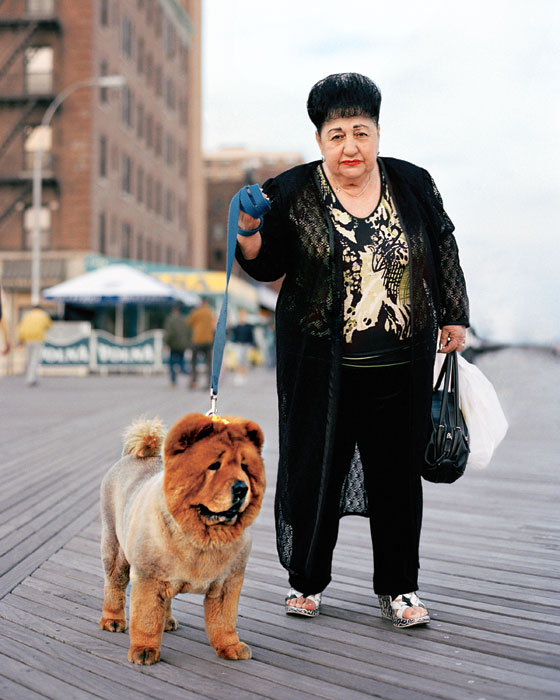The Everything Guide to Brighton Beach
 |
|
On the boardwalk in front of Volna.
(Photo: Monica Ruzansky) |
The biggest mistake one can make upon exiting the B at the last stop, inhaling undertow-flavored air and narrowly passing a man in a fake Gucci shirt and a rabbit hat hawking caviar from a foldable outdoor table, is to assume that you’re seeing a passable facsimile of Russia. Brighton Beach is far more interesting. What you’re actually getting is a kind of double-blind guess— a Jewish immigrant’s idea of what an American’s idea of Russia may be. And that’s what makes it arguably the most fascinating ethnic enclave in New York: It looks just as exotic to the ethnicity it enclaves.
Like its freak cousin Coney Island, the neighborhood known as Little Odessa is as much a state of mind as a location: stuck between two worlds, with its own culture, slang, radio, TV, magazines, and illicit pharmaceutical industry (think less meth and more FDA-unapproved heart drops). It’s too singular and ornery to be a true tourist trap. Unlike Little Italy, with its defanged Mafia lore, Brighton Beach frowns at suggestions the “Russian mob” has ever even existed; its secrets are still secrets, and its past is never far away.
The present population is simply the latest wave of Jewish immigrants to have settled it. The first batch were European war survivors who came in the late forties and early fifties, establishing beachheads such as Diamond’s clothing store (owned, yes, by Neil Diamond’s parents). The neighborhood fell into disrepair by the seventies, just before the second wave of Jewish arrivals—this time Russian-speaking. There was a rough period of all-out turf war when chain-wielding Russians with little to lose paired up with Meir Kahane’s Jewish Defense League to police the streets, displacing many black and Latino locals in the process. Then the enclave settled into its present state: a quick and dirty mock-up of capitalist paradise just 40 minutes from the real thing, and a nostalgic fantasy of the country left behind. The latest mass influx of Russians, this one not as uniformly Jewish, happened in the nineties, after the dissolution of the U.S.S.R.; earlier settlers, proud of their dissident credentials, haughtily called the supposedly venal newbies kolbasnaya immigraciya (literally “sausage immigration”) until the two groups happily blended over a shared love of kolbasa.
Right now on Brighton Beach Avenue, the neighborhood’s trestle-shaded thoroughfare, you’re equally likely to bump into the aging eighties arrivals who’ve never left their apartments or upgraded to the pink Oceana complex right nearby; their designer-clad kids jabbering in an amazing mix of gutter Russian, Brooklynese, and teen uptalk; Dominicans and Puerto Ricans making inroads back into the area; Manhattan hipsters out for an ironic evening of vodka and chintzy stage shows at Rasputin or the National; and half-repulsed, half-misty-eyed Russo-Americans like yours truly who have moved on geographically but are still reeled back in from time to time by the siren call of thick ice cream, a dubious DVD, and a jar of really good pickles.
Once the weather tops 70 degrees, the hardy locals will be quick to fill the beach with nightmare-inducing geriatric Speedo displays and drained bottles of Baltika beer. Visit right now, though, and you’ll still find the sand strip romantically empty and the avenue life at a perfect low simmer. The long-dueling ocean-view restaurants, Volna and Tatiana, are still trying to get the customers in. And there’s still a good chance you’ll be able to stroll the springy boardwalk at sunset with nothing between you and the Atlantic except diffused light, an ocean breeze, and a vodka buzz.

